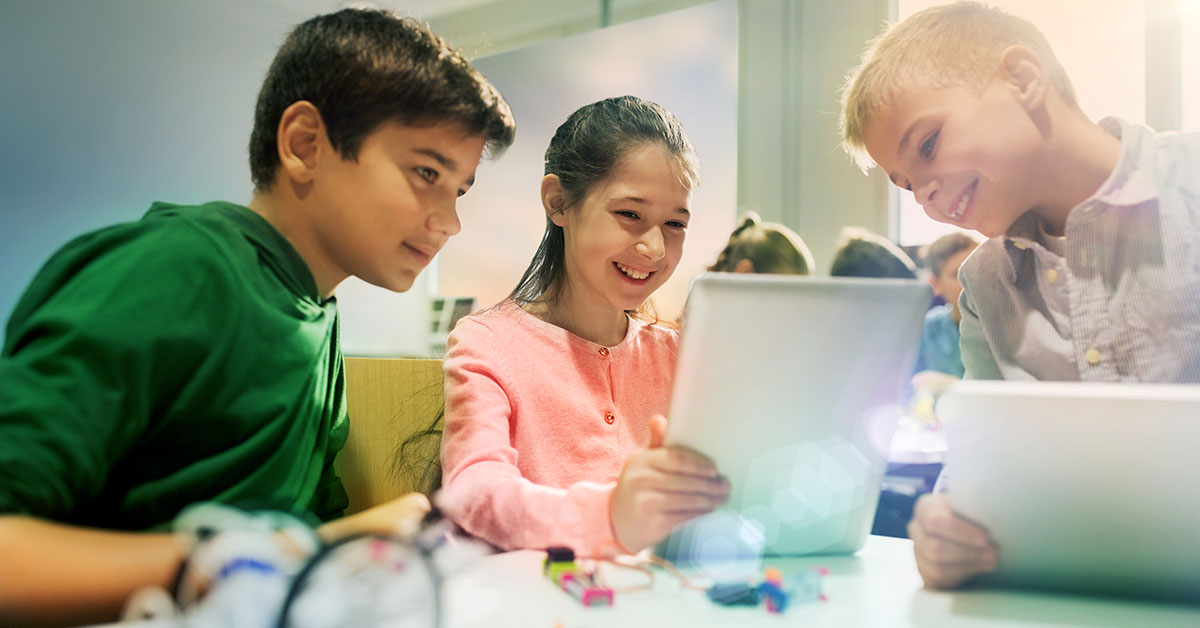
7 Benefits of Using Virtual Labs in K12 Education
Over the last few years, the education industry has witnessed a significant transformation in learning methods and techniques, making it imperative for educational institutions to keep up with the pace and prepare students adequately.
One of the ways technology has benefited K12 education, in particular, is the emergence of virtual labs. This blog will discuss what virtual labs are and the benefits they provide for K-12 education.
Table of Contents:
- What are Virtual Labs?
- Categories of Virtual Laboratories
- Top 7 Benefits of Using Virtual Labs in K12 Education
- Impact of Virtual Labs on STEM Learning
- To Conclude
What are Virtual Labs?
A virtual lab is an online teaching and learning environment to improve students’ laboratory skills. Unlike physical laboratories, which have time and location restrictions, virtual labs—one of the most significant eLearning tools—let students undertake a variety of experiments whenever they want.
Virtual labs incorporate pedagogical techniques that help learners better understand the theoretical information. These techniques include visual learning, active learning, recall-based learning, gamification & storytelling.
They also offer students access to a realistic lab experience, which allows them to perform experiments and practice their skills in a risk-free and interactive learning environment.
Examples of virtual labs in K12 education include:
- Interactive chemistry simulations for conducting virtual experiments
- Virtual dissection tools for biology classes
- Physics simulators for exploring concepts like motion and energy
- Environmental science labs for studying ecosystems and climate change
- Engineering design platforms for creating and testing virtual prototypes
These virtual laboratory-in-education tools provide hands-on learning experiences while overcoming the limitations of physical labs.
Also Read: 8 Challenges and Solutions in Localizing Training Programs for a Diverse Workforce
Categories of Virtual Laboratories
Virtual labs are not all the same; they vary greatly in their use, composition, and goal.
In contemporary academics, virtual labs generally fall into the following categories:
- Labs: These are digital platforms that replicate real-world laboratory settings. The sole distinction between the physical lab and the online experience for students is that the latter’s resources are restricted to a two-dimensional space.
- Simulations: From a distance, simulations allow pupils to investigate an alternative reality.
- VR Environments: Unlike simulators, virtual reality (VR) classrooms provide a more immersive experience.
Top 7 Benefits of Using Virtual Labs in K12 Education
With that said, let’s go a bit further on how virtual labs make an effective visual aid as one of the benefits of reinforcing the learning experience.
1. Top-Notch Equipment
Thanks to virtual labs, K12 students have simple access to state-of-the-art technology for experimentation. Science students can use virtual microscopes and simulations to learn about futuristic solutions.
Learners do not have to settle on outdated equipment with a virtual lab in place. Instead, they can work with AI-powered laboratories and modern teaching techniques. They can easily compete with peers using advanced technological solutions.
Further, these labs can help the teacher cover various aspects of the course curriculum with practical applications. It allows students to understand the concepts better, which is otherwise difficult to offer with limited equipment and funding.
The integration of advanced technologies in K12 virtual labs includes:
- Augmented Reality (AR): Providing digital information over real-world objects to help enhance learning experiences.
- Virtual Reality (VR): Experimental and science concept exploration using immersive 3D environments.
- Artificial Intelligence (AI): Personalized learning experiences and adaptive feedback tailored to student performance.
In high school settings, these virtual lab technologies give students access to state-of-the-art equipment and experiences that may otherwise be unavailable or prohibitively costly in traditional physical labs.
2. Serves as a Visual Aid to Teach Complex Concepts
Teachers can use virtual laboratories, which offer an immersive visual experience that can help students learn, to help students understand difficult theoretical topics. It also provides the harmonization of theoretical ideas with practical uses.
3. Ensures Student Safety
In a virtual lab, students can conduct various experiments without risking damage or breaking equipment. Without putting them to the test in real life, they can also evaluate many scenarios, compare them, and decide which is the most successful.
Virtual laboratories, created with state-of-the-art technology, shield students from the risks of performing risky laboratory activities. They also provide a practical means of preventing laboratory mishaps and eliminate the necessity of handling hazardous materials, radioactive materials, and other comparable risks.
4. Engages Learners
Students may eventually lose interest in watching and listening to lectures regarding experiments. With virtual laboratories, instructors can test all those procedures online, grabbing students’ interest.
The same experiment can be carried out by students several times to ensure they fully grasp the idea.
5. Offers Instant Feedback
Another advantage of virtual labs is allowing students to redo the experiments. Unlike in traditional labs, experiments in virtual labs no longer have a single-chance option. Students can review their mistakes, analyze what went wrong, and give it another shot immediately.
Since all the experiment results are recorded, maintaining communication between teachers and students becomes more efficient.
6. Allows Learning Flexibility
One of the most popular advantages of online education is the ability for students to learn at their own time and pace. This also holds for online labs, which support students’ study, planning, and execution of lab experiments whenever and wherever it is most convenient.
Every virtual laboratory is web- or cloud-based, so there are no restrictions on when students can access the platform. Students must use contactless learning because they can access the lab anywhere via any device.
7. Affordable Alternative to Physical Labs
Online or virtual labs are far less expensive than real ones. One lab platform can serve an entire school or institution without spending much resources on its development. Besides, schools don’t need to worry much about maintenance and other similar expenses.
Virtual labs offer significant cost savings for schools:
- Reduced Equipment Costs: A single virtual lab platform can serve multiple classrooms, eliminating the need for duplicate physical equipment.
- Lower Maintenance Expenses: Virtual labs don’t require ongoing maintenance or replacement of damaged materials.
- Decreased Safety-Related Costs: With no physical hazards, schools can save on safety equipment and insurance expenses.
- Resource Efficiency: Virtual labs consume fewer resources like water and chemicals, saving additional costs.
These advantages of virtual laboratories make them an economically viable option for schools with limited budgets.
Impact of Virtual Labs on STEM Learning
Virtual labs have revolutionized STEM education in K12 settings.
- Increased engagement: Interactive simulations and gamified elements drive students’ interest and participation in the STEM subject.
- Improved conceptual understanding: Visual representations and hands-on virtual experiments help students easily grasp complex scientific concepts.
- Development of critical thinking skills: Virtual labs encourage students to form hypotheses, analyze data, and draw conclusions, fostering scientific reasoning abilities.
- Preparation for future careers: Cutting-edge virtual lab technologies expose students to STEM fields and help them further develop their digital literacy.
- Accessibility and inclusion: With virtual labs, everyone can access the same high-quality lab experiences no matter where or what school resources they have.
One recent study shows that different institutions that have started implementing virtual labs have seen a 24 percent increase in student performance.
Also Read: Adapting Workforce L&D Programs to the Virtual and Hybrid Landscapes
To Conclude
K12 instructors always look for new and inventive methods to improve their online learning procedures as the education landscape evolves. The virtual laboratory is one of the greatest digital tools for reducing expenses and increasing student productivity.
Additionally, they flawlessly combine the usefulness and convenience of contemporary technology with the flexibility of remote learning for students to participate in classwork. Virtual labs are here to stay, even though there is still room for development before they completely replace physical laboratories.
Are you trying to boost K12 learning outcomes with virtual labs? Hurix Digital has the solution—contact our team to explore how we can assist you!

Senior Vice President
A Business Development professional with >20 years of experience with strong capability to sell new solutions and develop new markets from scratch. New Market Entry Specialist with experience of working in two of the largest emerging markets – China & India. Also covered other key markets in APAC, US, EU & ME. Exceptional experience of conceptualizing, ideating and selling new learning technologies like VR AR, etc. across multiple industry verticals.






